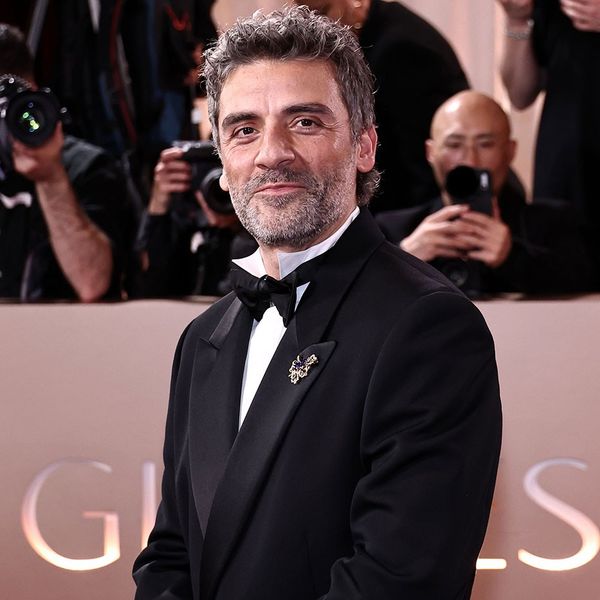An Old-Meets-New, Luxe & Laid-Back Guide to Seoul
From traditional markets to K-beauty treatments in the “Beverly Hills” of Seoul, we have everything you need.

When I arrived in Seoul for a month-long trip last autumn, I could feel straight away that it wasn’t what I’d imagined it’d be. It was even better. (And that’s not just because I get to sing and dance to my favorite K-pop songs as they blast from every which way, but it’s definitely a perk.) The South Korean capital offers a dizzying clash of history and modernity, natural landscapes and urban sprawl, sleepy villages and party-hardy enclaves. The fast-moving ppali ppali culture urges you to rush through it all, posing a challenge to keep a steady pace. Even in the midst of my monthslong, fourth trip here this year—my passion has no bounds (or budget)—I still feel like I’ve yet to scratch the surface. Yet powered by a fighting spirit and cup after cup of coffee served at designed-for-the-gram cafes, I’m certainly trying to eat, see, and do *all* the things.
Ahead, check out my painstakingly chosen selects for best-of-the-best beauty, bites, sites, shops, and stays—plus a few recs to help you rest and recover—to get a substantial taste of what the spirited city has to offer.
Where to Stay
Ananti at Gangnam: Want to pretend that you’re on a superyacht but remain on dry land? The five-star Ananti at Gangnam is as luxe and mock-seafaring as it gets, with 81 rooms designed as two-story cabins. The sinuous lines, earthy tones, and opulent textures will leave you feeling like a high roller on the high seas. Here, K-drama lovers can live out their chaebol (one-percenter conglomerate) fantasies; just note that rich and romantic boyfriends aren’t complementary with the room rate.
Hanok Stays in Jongno: For an immersive cultural experience, stay in a hanok (traditional Korean home), the bulk of which are located in the central district of Jongno. Accommodations range from basic and shared to modernized and lavish. Stay Folio lists incredible properties—hanoks and otherwise—some of which are exclusive to the discerningly curated booking site. (You can also browse portals like Booking.com and Agoda, or head to Airbnb and filter your search with the hanok category.)
Where to Eat
Gwangjang Market: Gwangjang Market is one of the country’s oldest and largest traditional markets. A sprawling mecca for street food, it’s your best bet to ensure you’ll get an authentic taste of Korean flavor. Pick and choose from the sights and smells calling your name… or from the actual shouts thrown your way from competing vendors vying for your patronage.
Tongin Market: Tongin Market’s lunchbox option is ideal for foodies on a mission for culinary exploration, as well as those who are unfamiliar with Korean cuisine and want to sample a variety of K-foods. Head upstairs to exchange 10,000 KRW (~$7.40) for tokens and a lunchbox, then head back down and browse the stalls offering small mains and banchan (side dishes) under this special menu. I last filled up on japchae (stir-fried glass noodles and veggies), pajeon (green onion pancake), and kimbap (rice and veggie rolls wrapped in dried seaweed), among other yummy bites.
Tosokchon Samgyetang: Just a stone’s throw away from Tongin Market is Tosokchon Samgyetang, a revered chicken ginseng soup restaurant. There’s usually a line to get in—and I don’t do lines—but it’s definitely worth the relatively short wait. Samgyetang is said to increase blood circulation and restore your energy, both of which will come in handy as you continue your trek through the vibrant city.
Myeongdong Kyoja: Myeongdong is a packed tourist district akin to Hollywood or Times Square. That said, I typically wouldn’t recommend the pilgrimage under any circumstances, but Myeongdong Kyoja—a Michelin-reviewed casual spot with can’t-beat prices of 12,000 KRW (~$8.90) or under—is worth braving the crowds. They offer only four items on the menu: kalguksu (knife-cut noodles in chicken broth, topped with dumplings and ground meat), pork and veggie mandu (dumplings), bibimguksu (spicy mixed noodles), and kongguksu (soy milk noodle soup, which is only on offer from April through October). Try them all and thank me later.
Onlygo: Have you watched Singles Inferno on Netflix? Though I’ve never binged Love Island, I’m convinced the former is the latter’s G-rated Korean counterpart. Hand-holds and lingering glances are as racy as it gets, but somehow, it’s still incredibly titillating. Anyway, season one cast member Moon Se-hoon is the handsome owner of Onlygo, a small but chic eatery in Gangnam’s ritzy Sinsa-dong neighborhood. Their salmon benedict—spread with onion jam, topped with a runny egg yolk and wasabi, then smothered in thinly shredded cheese—is one of my favorite dishes ever, full stop. They market themselves as “a place to go only with your loved ones,” which kind of makes it seem uninviting to my norm of solo dining, but I’m a repeat party of one nonetheless.
Where to Wander
Hanok Villages in Jongno: Jongno is always one of my home bases when I visit Seoul. Not only is it super central and accessible to countless attractions by foot, subway, and bus, but it’s also home to a high concentration of charming villages abundant with hanoks converted into cafes, boutiques, galleries, and the like. You’ll also happen upon historic palaces (the grandest being Gyeongbokgung) plus museums for everything from folk music and contemporary art to kimchi and traditional Korean food.
Start in Bukchon, where local guides stationed on the main road helpfully provide maps and suggestions for the historic (and hilly) residential village. From there, head east to Samcheong-dong. Get a sugar rush at Samcheong Bingsu, where they offer a mountain of the eponymous milk-based shaved ice, before browsing boutiques and heading to the Nonfiction store for premium body care and fragrances. You can then go south to Insa-dong, a tourist favorite for crafts and souvenirs. Last but not least, walk east to Ikseon-dong—which is relatively under the radar but is one of my favorite areas in Seoul—for an obligatory photo booth session, followed by coffee and a croffle at one of its many dessert cafes.
Seongsu-dong: Packed with warehouses-turned-hotspots, you can think of Seongsu-dong as the upscale hipster heart of Seoul. Browse the second floor of Scène, a concept store with a rotating selection of wares from local brands, before walking on the main drag of Yeonmujang-gil. Exhaust your credit card at Velvet Trunk for premium streetwear from StandAloné and Human Made, at Beaker for casual Western faves like Ganni and Sporty & Rich, and at Dear Dracena for naturally derived bath and body products. A few blocks away is Seongsu Federal, a small food-and-shopping complex. Walk up to Cheonsang Gaok, a trendy dessert cafe with a glass rooftop and balcony seating.
Where to Get Your Beauty On
Traveling to Seoul and not getting a K-beauty treatment is like traveling to NYC and not grabbing a slice of pizza. Gangnam—which is basically the Beverly Hills of Seoul (it even contains an area called Apgujeong-rodeo, named after Rodeo Drive)—is the beauty capital of the city and the country at large, so consider one of these visits to be a rite of passage.
Gangnam Skin Clinics: Seoul’s skin clinics are bustling enterprises, operating like factories with little privacy but the utmost efficiency. They’re usually not fancy, but they get the job done—and on the cheap, at that. Rotating promotional packages (aka “events”) are always on offer, plus many price the treatments at or even under cost to keep up with the competition. (Math isn’t my strong suit, but I’m convinced that if you fly to Seoul for a week of your go-to’s like Botox, fillers, facials, lasers, and peels, you’ll pay the same, or maybe even less, than what you would in major US cities—with flights and accoms included.)
I’ve visited a handful of English-speaking clinics around Gangnam’s Sinnonhyeon neighborhood: Ppeum recently opened an aesthetically pleasing global outpost; Lienjang has a foreigner-specific section and is popular on social media; and Muse Clinic is super easy to book last-minute treatments online. Better yet, you can opt into consultations to ensure that the treatments you choose are right for your concerns.Shangpree Spa: For something a bit more luxe and private, head to Shangpree Spa—a mainstay for Seoul’s rich and famous. Shangpree also has a reasonably priced in-house skincare brand, offering products based on shifting skin conditions (like heated, cloudy, and desert) that will look great on your bathroom shelf when you get back home.
Where to Get Your Wellness On
Spa Lei: A visit to a jjimjilbang (Korean bathhouse) is another absolute must for any trip to Korea. Located in the Sinsa-dong neighborhood of Gangnam, Spa Lei is a 24-hour, women-only, three-story hub to spa and schvitz to your heart’s content. You can pay around 16,000 KRW (~$12) to use the facilities alone, which include hot tubs, a steam room, an infrared sauna, a salt room, rooftop bath, and tons more. However, I highly recommend purchasing a body exfoliation and massage package for about 120,000 KRW (~$88). An ajumma (female elder) clad in a bra and panties will scrub, splash, then rub you down from top to toe. It’s not for the faint of heart (or for the sensitive of skin), but you’ll walk out with skin as smooth as a baby’s bottom.
Hikes in Seoul: If you’re the type to keep up with your workout regimen while on vacation, branch out beyond the hotel gym. There are nearly two dozen hikes in the city to choose from: Bukhansan is the most well-known, and I thoroughly enjoyed Ingwansan and Namsan. (Tip: At Namsan, hike your way up to the N Seoul Tower, visit the observatory for a panoramic bird’s eye view of the city, then take the cable car down.)
The Flow Room Yoga: My fellow yogis will enjoy the Flow Room, Seoul’s first fully English-speaking yoga studio, located in Itaewon. They offer a diverse range of classes, from ashtanga and hatha to yin and sound baths, as well as special events both in and outside of the studio. I was fortunate enough to catch two stand-up paddle yoga classes on the Han River, which are amongst the most incredible travel experiences I’ve logged to date.
Park Roche Resort & Wellness: If you find yourself in need of some serious R&R outside of the city, head two hours east to Park Roche in Jeongseon, Gangwon Province. Equipped with a spa, separate jjimjilbangs for men and women, indoor and outdoor pools, a stargazing deck, cooking classes, and a full schedule of yoga and meditation classes (albeit in Korean), the wellness resort has all the facilities you need to rejuvenate for a few days.




